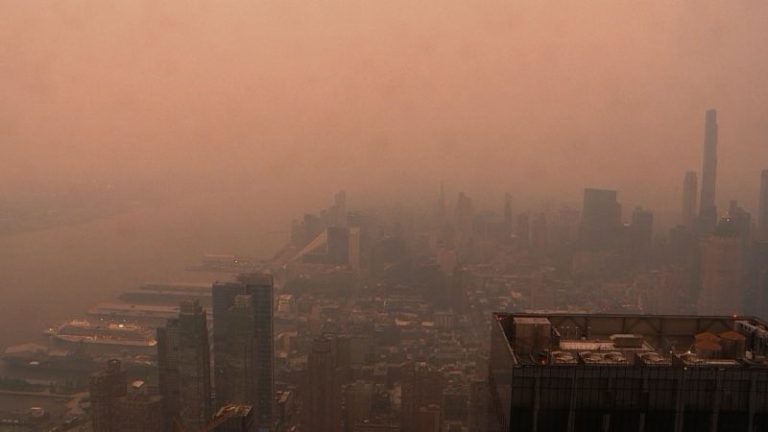A plume of thick smoke streamed south from Canada throughout the day Wednesday, moving into some of the most densely populated regions in the Northeast and mid-Atlantic, including the New York City metro area.
It prompted significant concern from health professionals, forced a ground stop at a major New York airport and led to the cancellation of outdoor school activities.
And forecasts suggest it could linger for days.
The smoke, emanating from more than 100 active fires in central Quebec, is being carried down on the back side of a low pressure system centered over New England.
The thickest smoke on Wednesday stretched from Lake Ontario to Long Island and was slowly pushing south. It will persist in the New York City metro and across much of New Jersey through Wednesday evening and into the overnight.
But the winds will also start to push that thick band of smoke farther south into the mid-Atlantic, into cities like Washington, DC, and Baltimore.
MAPS: Track air quality and wildfire smoke across the US
By Thursday morning, Delaware, Maryland, northern Virginia and the nation’s capital could see the same poor air quality that plagued New York City on Wednesday.
While Thursday may be an improvement for many in the New York area, smoke will likely continue to be significant, and air quality could near or reach unhealthy levels yet again.
Unfortunately for those in the Northeast, the weather pattern is not helping. The low pressure that is funneling the smoke into the US is forecast to linger over New England through the weekend, meaning northwest winds will continue to point the Canadian smoke towards the eastern Great Lakes and Northeast for the next couple of days.
This pattern could eventually break by next week as a new storm system moves in from the west. Significant rainfall and stronger winds is exactly what the Northeast needs to clear out the smoke.
The summer of smoke
Unfortunately, the next few months could spell a summer of smoke for Canada and the US, with the bulk of Canada’s fire season – which doesn’t typically end until September – still lying ahead.
A hot and dry spring has led to an incredibly active start to the fire season across almost all of Canada, and massive fires in Alberta and Saskatchewan started impacting air quality in the US and Canada back in May.
Last week, wildfires in Nova Scotia pushed smoke south. Over the weekend, the fires shifted to Quebec. For all of these locations, the hottest part of the year is still ahead and the peak of fire season doesn’t come until later in July.
Wildfires have already burned a full year’s worth of acreage in Canada so far this year. In a typical year, only around 10 to 15% of the annual average would have burned by the first week of June.
Without a significant cool and wet pattern setting in over Canada, these fires will likely continue to burn and new ones pop up for many weeks to come.

